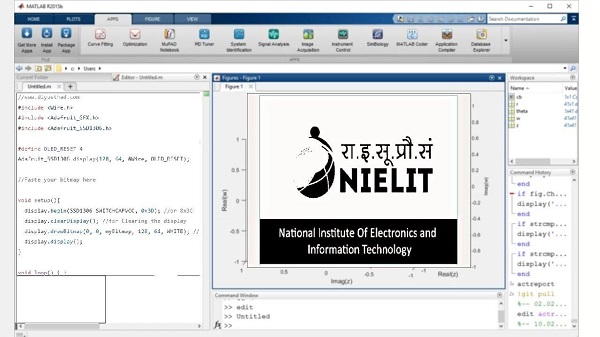Complete Data Transmission using Li-Fi Technology with Visible Light Communication
|
Abstract |
1.Introduction |
|
Everyday numbers of people use the internet. Demand for net access increased as a result. Wi-Fi (wireless fidelity) is more expensive and exhibits sluggish data speeds when more than two routers are connected. Li-Fi (light-fidelity) is a good solution to solve these problems. It is a wireless technology that uses LED or infrared light to transfer data. This method uses a light source to transmit data while using VLC. Li-Fi uses LED for up to 500 Mbit/s of communication over short distances or regular lamps for transmissions at 10 Kbit/s. By conducting experiments, the system described in this paper can deliver data over a variety of distances. |
Professor Harald Haas first introduced Li-Fi in March 2011 under the frequency bandwidth, among others. 10,000 times as vast as the radio frequency Ease networks cause of that Wi-Fi tailback. The more people that connect to Wi-Fi, the less reliable it becomes. Other important networks cause that Wi-Fi tailback. Name "data through illumination." The concept is based on visible light as a way to send data. Another name for it is light-based wireless fidelity (Wi-Fi). Here, a transceiver configured with LEDs is used as a source of illumination and a data transmission device in place of Wi-Fi modems. It is generally anticipated that VLC technology, also known as light fidelity Li-Fi, will replace Wi-Fi for indoor communication. |
|
2.Background |
3.Project work |
|
Li-fi is a wireless communication technology which utilizes light to transmit data and positions between devices. The first term was introduced by Harald Haas during a TEDGlobal talk in Edinburg. LiFi data is delivered in several bit streams, and the message is decoded on the receiving end by an Infrared detector. Binary data is transmitted, with 0 denoting an LED in its "OFF" state and 1 denoting an LED in its "ON" state. |
In this project to transfer different type’s data with faster speed than Wi-Fi and check the transmission speed through various distances. A Li-Fi network transmits data to a device, such as a laptop or tablet, using the light from LED lamps. Infrared light is used by the device's transmitter to deliver light signals back to the lamp after receiving them from a receiver. By using Arduino IDE to transfer data like audio, image, text and video. |
|
4.Result |
5.Conclusion |
|
This work describes visible light communication for the transfer of large amounts of information. It is shown that light-emitting may be used to transmit high-quality wireless optical data. Additionally, the measurement setup and findings have been described. |
This work describes visible light communication for the transfer of audio, text, images, and video. The experimental results are detailed and discussed in depth, and the gadget design is thorough. With the addition of a focusing sensor between the transmitter and the receiver, it has been shown that high-quality video/audio and image transmission is possible across 12 feet. |
|
|
Even yet, there are still limitations when comparing photos taken before and after transmission. It is shown that LEDs may be used to transmit high-quality wireless optical data. Additionally, the measurement setup and findings have been described. |
|
6.Acknowledgement |
7.References |
|
The satisfaction and euphoria that accompany the successful completion of any task would be incomplete without the mentioning of the people whose constant guidance and encouragement made it possible. It gives me immense pleasure to present our project report on " Complete Data Transmission using Li-Fi Technology with Visible Light Communication " as a part of final year study of B. Tech (EDT), which is result of studied blend of both research and knowledge. We deeply indebted to Dr. Sanjeev Kumar Gupta, NIELIT, Aurangabad under whose guidance, motivation, encouragement and faith in us provided opportunity to work on this project. We would like also to thank our guide Mr. Saurabh Kesari, Designation for their inspiration, guidance and support. This constant source of encouragement, support & motivation helped us in a long way throughout the project phase; this forced us to the limit & brought forward the best in us. Also, we sincerely thank to Dr. Sasi Kumar Gera, Dean Academic & Mr. Prashant Pal, B. Tech coordinator for providing resources in laboratory and we are very much thankful to all teaching and non-teaching staff who were directly and indirectly involved in our project work. We wish to thank our parents for having raised us in such conducive and loving environment, for teaching us to work hard and persevere which has enabled us to come so far. We wish to thank whole hearted support of our batch-mates of B. Tech and specially our junior friends, who were always present whenever we needed them. |
M. Vasu, A. K. Mishra, U. S. Chauhan, D. Chandola and S. Kapoor., "Image Transmission using Li-Fi," 2018 Second International Conference on Inventive Communication and Computational Technologies (ICICCT), 2018, pp. 287-292. S. S, R. B, P. L, S. S, S. M and V. V, "Audio Transmission using Visible Light Communication and Li-Fi Technology," 2021 6th International Conference on Inventive Computation Technologies (ICICT), 2021, pp. 19-24 E. Ifada, N. T. Surajudeen-Bakinde, N. Faruk, A. Abubakar, O. O. Mohammed and A. O. Otuoze, "Implementation of a Data Transmission System using Li-Fi Technology," 2019 2nd International Conference of the IEEE Nigeria Computer Chapter (NigeriaComputConf),2019pp.17. A. Assabir, J. Elmhamdi, A. Hammouch and A. Akherraz, "Application of Li-Fi technology in the transmission of the sound at the base of the PWM," 2016 International Conference on Electrical and Information Technologies (ICEIT), 2016, pp. 260-265. |
|
Developed by |
|
|
|
|














